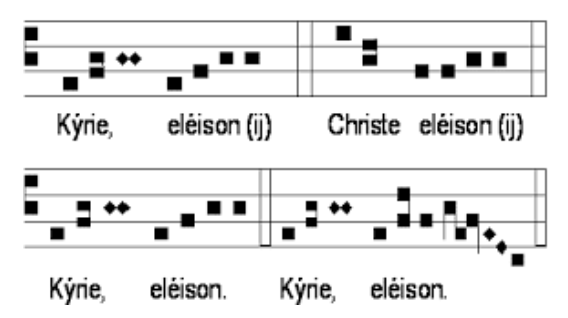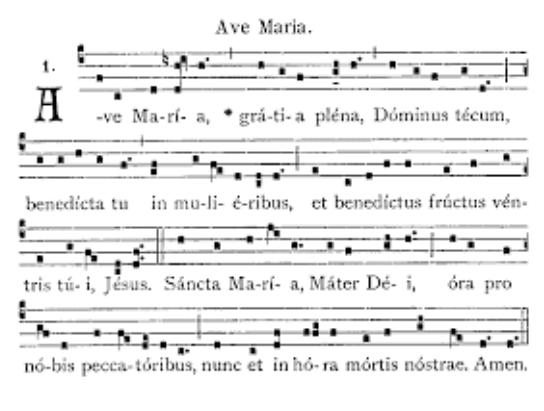Uncategorized
What is Counterpoint?
The strictest definition of the word comes from Latin “punctum contra punctum” which means “point against point”. This term was coined in the beginnings of the XIV century in Europe.
The reason for this word comes from the first neumes of the Gregorian chant. The
musical notes were written under these symbols:



Below we can find an example of how this neumes sounded with the “Sequentia: Dies Irae“
https://www.youtube.com/watch?v=RMZPdSo2qUQ
COUNTERPOINT Vs POLYPHONY
Firstly, let us clarify the terms and the frame of our study.
The terms Counterpoint and Polyphony are intimately related, but the strict term counterpoint also encompasses procedures beyond polyphonic discourses.
Counterpoint
Comprises a glance from the “note against note” (punctum contra punctum) mentioned above, in the vertical aspect, as well as in the horizontal one.
Counterpoint also deals with voice leading of each sound within a piece and the elaboration of each melodic line.
Polyphony
Sometimes used as a synonym for counterpoint, defines a texture. According to the definition given by the Encyclopedia Britannica:
“Polyphony, in music, the simultaneous combination of two or more tones or melodic lines (the term derives from the Greek word for “many sounds”). Thus, even a single interval made up of two simultaneous tones or a chord of three simultaneous tones is rudimentarily polyphonic. Usually, however, polyphony is associated with counterpoint, the combination of distinct melodic lines.”
“The word counterpoint is frequently used interchangeably with polyphony. This is not properly correct since polyphony generally refers to music consisting of two or more distinct melodic lines while counterpoint refers to the compositional technique involved in the handling of these melodic lines.”
The study of Counterpoint refers to the elaborations of melodic contours, as well as the relationship between the different voices that participate in the musical discourse.
The term Contrapuntal, aligns itself to a specific texture, to the fabric that presents a composition that has different voices with its melodic profile.
One of the main topics we will see is “Voice Leading “; It begins with the elements that make the construction of melodic lines coherent and logical, establishing the principles of musical discourse that will be expanded in the study of Harmony. In a passage found in the book of Knud Jeppesen we see some clarification on the matter:
“The problem is not only to write beautiful and independent melodies in all parts but also at the same time to develop the chordal combinations as fully as possible. We must write fresh, lifelike harmonic progressions and yet preserve a natural, convincing voice leading. Most highly cultivated polyphonic music will hold up under investigation from either the linear or the harmonic viewpoint”. (“The polyphonic vocal style of the XVI century “. Page 4)
EXAMPLES
Below, you will find two examples to differentiate and understand the Polyphonic and Counterpoint uses:
1. This one can be Polyphonic, as all the voices conform a fabric with distinctive melodic lines, or “voices” under the Haydn Sonata in C minor, Hob. 20.
https://www.youtube.com/watch?v=hwOlGL5GJFU&t=45s
2. In this example, a Three-part invention No 2 in C minor BWV 788, using Counterpoint techniques in its purest form:
https://www.youtube.com/watch?v=uURgFiliOE0
Watch now our online lesson analyzing the Counterpoint concept.
https://www.youtube.com/watch?v=6e-0f3rAIJE
COUNTERPOINT SERIES – SPECIES
Do not miss our Counterpoint series with which you will learn Invertible Counterpoint, and also first, second, third, fourth, and fifth species! Learning Counterpoint has never been so easy!

